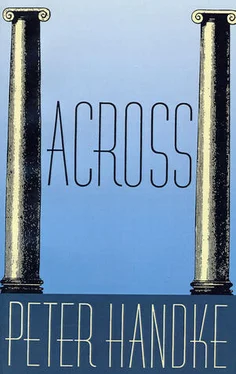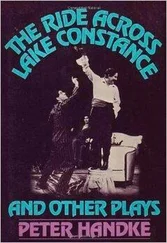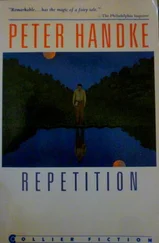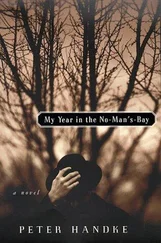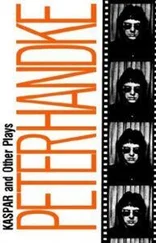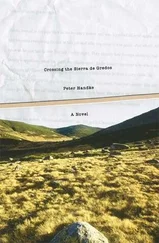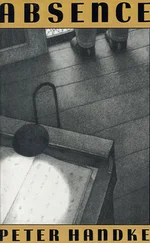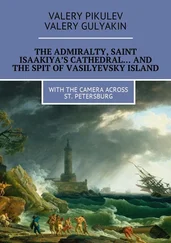Peter Handke - Across
Здесь есть возможность читать онлайн «Peter Handke - Across» весь текст электронной книги совершенно бесплатно (целиком полную версию без сокращений). В некоторых случаях можно слушать аудио, скачать через торрент в формате fb2 и присутствует краткое содержание. Год выпуска: 2000, Издательство: Farrar, Straus and Giroux, Жанр: Современная проза, на английском языке. Описание произведения, (предисловие) а так же отзывы посетителей доступны на портале библиотеки ЛибКат.
- Название:Across
- Автор:
- Издательство:Farrar, Straus and Giroux
- Жанр:
- Год:2000
- ISBN:нет данных
- Рейтинг книги:3 / 5. Голосов: 1
-
Избранное:Добавить в избранное
- Отзывы:
-
Ваша оценка:
- 60
- 1
- 2
- 3
- 4
- 5
Across: краткое содержание, описание и аннотация
Предлагаем к чтению аннотацию, описание, краткое содержание или предисловие (зависит от того, что написал сам автор книги «Across»). Если вы не нашли необходимую информацию о книге — напишите в комментариях, мы постараемся отыскать её.
Across — читать онлайн бесплатно полную книгу (весь текст) целиком
Ниже представлен текст книги, разбитый по страницам. Система сохранения места последней прочитанной страницы, позволяет с удобством читать онлайн бесплатно книгу «Across», без необходимости каждый раз заново искать на чём Вы остановились. Поставьте закладку, и сможете в любой момент перейти на страницу, на которой закончили чтение.
Интервал:
Закладка:
Together we went down the so-called Festival Stairway. On the last step the painter stopped, pointed one hand at the mountain behind us and the other at the Festival buildings ahead of us, and said: “It’s not a threshold that made me stop here. No, what stops me is a borderline. Or rather: something in me is stopped here, even if I go on. When I set foot in the Old City, something in me stops breathing. Some say the city puts them in a bad mood. I call that an understatement. A bad mood that makes you scream is more like pain. Whenever I come here, I try to pretend that nothing is wrong. But after a few steps, the borderline makes itself felt, colors lose their meaning, and even if I run, I can’t breathe. And the main thing perhaps is not the crowding — now, for instance, the city is empty — but this overpowering central zone that no crowd can fill. Or is it the other way around, that nothing can fill the center, so that all there can be is a disorderly crowd — a pushing, staggering, shoving, a barring the way to one another, as nowhere else in the world? No, nothing here makes for space, neither the parades nor the march-pasts of scar-faced city officials nor the swaying chamois beards on simpletons’ hats. Nor the processions of glittering brocade cloaks and golden monstrances; nor the melancholy idlers. And yet I once saw a procession in the city: a group of feebleminded people, slapping each other on the back, pushing and wrestling, swarming from souvenir shop to souvenir shop, shouting their joy at being let out, at being in town. The big bells, it’s true, give one a feeling of the place, except for the chimes, which to my mind evoke the slamming of a tin door, a car that won’t start, someone clearing his throat, or the clatter of high-heeled shoes. Did you ever lose your footing in the woods, while climbing a mountain for instance, and reach through the underbrush to grab a rotting tree trunk? Precisely because your hand meets with no resistance, you feel for a moment as if it were gone (severed by a yellow and black salamander or some other crawling thing). I’ve often had a comparable feeling when coming into this city. Here, too, the transitions are as camouflaged as the boundary between mold and foliage. See how the facade of the Festival Theater in front of us has been adapted to the mountain behind us? In the eyes of those responsible for the building, the gravel embedded in the limestone makes the mountainside look like concrete; and that was their justification for building with concrete. They even prided themselves on the idea: mountain and theater were one. To make the building even more mountainlike, they chiseled artificial fissures into its concrete façade. That’s what I mean by border fraud. And I call it a crime. Take a look at the line back there, where the rock face seems to merge with the concrete. At first sight, the two substances that have been forced together don’t even seem related; in the mountain, you see any number of oblique layers, and in each layer, after you’ve looked at it for a while, the sinking, rolling, stopping, and spreading of gravel is repeated, along with the intervals when the waters were at rest. With each new stripe, the tide seems to change. But in the adjacent concrete wall, the most you can detect is the impetus with which at some time or other — you get no feeling of time — a mixture of cement and gravel was poured into the revetment. The rock is covered with moss and lichen, its recesses and outcroppings with flowers and grass; the imitation, on the other hand, is covered with a film of cement, and not so much as a blade of grass has ever grown in its artificial fissures. How colorful the mountain can be, especially in wet weather; apparent gray turns to brown, yellow and red, even eggshell white, basalt black and bottle green, after the manner of gravel paths in the rain — whereas this monstrosity thrown up in front of it shimmers eternally in its pallid non-color. Isn’t it strange? The mountain, a piece of nature, is real to us, whereas the artifact affecting kinship with it repels us with its ludicrous unreality. Border fraud is in this case a crime, and such criminals are my enemies. Even on the mountain slopes, criminals erect their bastions with impunity: they need only leave the façades of their residential or commercial bunkers unfinished and they are given credit for respecting the environment. Any sheet-metal shack, any space station, any Bedouin’s tent would be more respectful. And the disrespect so typical of our city is most strikingly exemplified in the Festival Stairway, on the bottommost step of which we are now standing; which the experts rave about; and which in my opinion is of all outdoor stairways in the world the least deserving of the name. Ordinarily the word ‘stairway’ makes me think of ‘airiness’; here I think of ‘doldrums.’ The mustiness of the whole city begins at the uppermost landing. Here again, on these stairs, there is no space. Hardly anyone lingers here. At the most, someone wanting to catch his breath will lean on the iron bar that has been cemented onto the concrete in lieu of a banister. On the way down, a lot of people run; on the way up, they count the steps either aloud or to themselves, as one might in a tower. The steps — split granite slabs — are too high, too narrow, and too shallow. Footfalls are dull thuds or squeaks; you can’t walk two abreast if someone is coming in the opposite direction; if two people do walk side by side, the steepness makes their conversation shrill and it’s frequently interrupted by panting; when I meet my best friend here, we hardly recognize each other because the difference in elevation distorts our faces — and often enough they are not just distorted but also obscured by a shimmering film of cement — or else I see him only as a silhouette, it’s as if I were seeing him at the far end of a tunnel. These stairs don’t leap up the mountainside as an independent structure, they are a mere accessory of the concrete, which in places they are obliged to tunnel under. Instead of sweeping lines, they move in sharp angles followed by sudden curves, which are as troublesome to a slow walker as to a runner. The middle landing, which in other stairways offers an occasion to stop and look around, is placed in a dark and musty tunnel with a black puddle of urine in one corner and a pile of black-and-white pigeon droppings in the other. No, this isn’t an outdoor stairway; it’s a sewer. The Magic Flute serpent hewn into the stone parapet isn’t an ornament, it’s just bric-a-brac, and the court at the lower end of the sewer is likewise full of Festival bric-a-brac, and other kinds as well. And I must beg you not to imagine that my nocturnal tirade is my last word about border fraud. I mean to …”
The painter stopped and laughed. “Hm. What will I do? What will we do? Because my enemies elude my enmity.”
He stepped down from the stairs to city level and continued: “One day, when passing the statue of Mozart, I was surprised for a moment to notice that the face is turned toward the Old City. I had always thought of it as looking toward the river and away from the city. Then another day I was surprised to see that the two Gorgons’ heads to the right and left of the New Gate — the real mountain tunnel — point the way out of the city; I had always thought that the snakes in their hair and their blood-curdling eyes were addressed, rather, toward people going into the city.”
We went from one Old City square to another: all deserted, except for one where a drunk was leaning against the fountain, asleep; he was clutching a bottle, and one of his cheeks was puffed up. But the bars were loud with what the painter called the laughter of “triumphant heartlessness.” At that point, to my own surprise, I managed a reply of sorts.
Читать дальшеИнтервал:
Закладка:
Похожие книги на «Across»
Представляем Вашему вниманию похожие книги на «Across» списком для выбора. Мы отобрали схожую по названию и смыслу литературу в надежде предоставить читателям больше вариантов отыскать новые, интересные, ещё непрочитанные произведения.
Обсуждение, отзывы о книге «Across» и просто собственные мнения читателей. Оставьте ваши комментарии, напишите, что Вы думаете о произведении, его смысле или главных героях. Укажите что конкретно понравилось, а что нет, и почему Вы так считаете.
